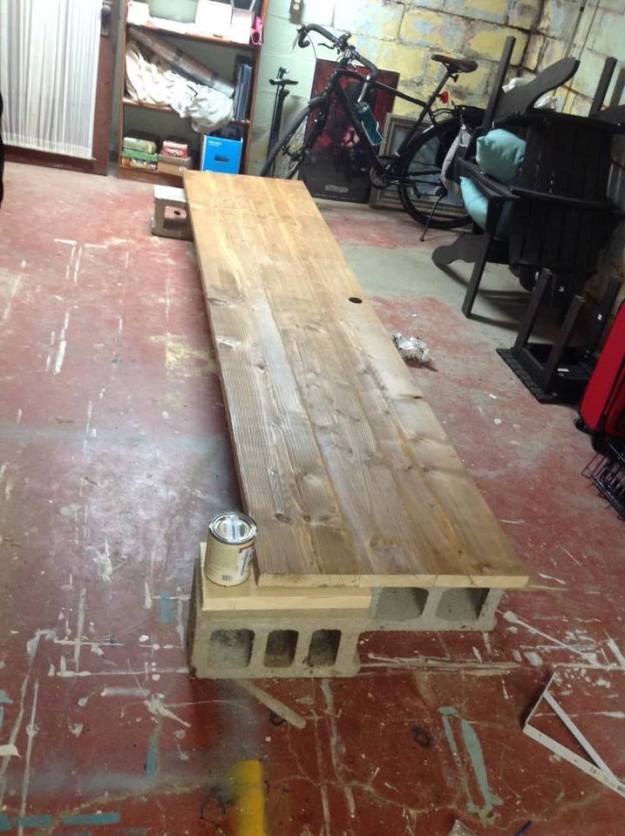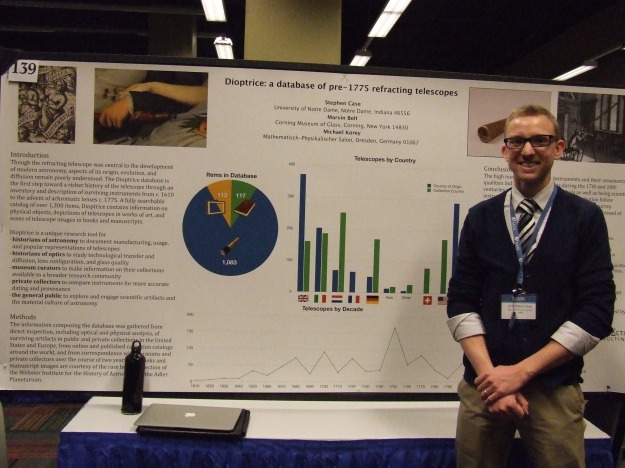I’m accustomed to my wife having the grand visions for our home as far as decorating, re-decorating, renovating, re-renovating, etc. My strategy when she begins one of these projects is usually to keep my head down and stay out of the way. Of course, this is largely impossible, because her projects often involve me building something. There was the dining room table, a while back, and then the built-in bed, more recently.
Her current project has been the renovating/repurposing of our sunroom. The room has always been a bit awkward, a late 50s addition that apparently turned an external porch into a long, narrow space we never quite knew what to do with. It held a tiny desk that I used for what passed as my home workspace, as well as a piano, a couple dog kennels, and assorted randomness.
My wife’s Pinterest-inspired vision for the room was to turn it into a more functional office/study/library, and my portion of this would involve the construction of a custom desk running the length of the room. I love the idea of a mammoth desk, and the skill level didn’t seem to exceed my standard: putting large pieces of wood together in a fashion that would keep them from falling apart over extended usage.
We measured the corner where we wanted it to fit, and I got to work. I had grand ideas of getting beautiful ten-foot planks of some kind of lovely hardwood, and then I saw the prices at Lowe’s. I settled for three ten-foot pieces of regular untreated lumber, which I assume were pine but know from their labels were grown in Idaho forests.

The trick was finding three pieces that didn’t look like they had fallen off the back of the truck multiple times on the way from the sawmill. I dug through the piles until I found a few that were good on at least one side and relatively straight, and then I stared at them for ten minutes trying to figure out the math. Did I want three that were ten inches wide (which would have made the desk too wide) or three that were only eight inches wide (which would have been too narrow)?
My son, who was helping me out that day, finally sighed and said, “Dad, why don’t you just get a mix so the measurement comes out right?”
Genius. So the middle plank is an 8-inch and the outer two are 10-inchers.

I joined them with the magic of a kreg-jig and only modest cussing (actually, it went together pretty easily) and then put 1 x 1 braces underneath and at the far lip. No fancy finishes here. This is going to be a workhorse. My wife reminded me that she wanted a hole drilled in the middle to run cords for those who don’t pen their epics in ink and blood, so I used a 2 1/4-inch hole saw inherited from my dad to make the whole thing look like a doorway for skinny giants.
My wife used witchcraft to find a stain that matched the engineered hardwood floor I installed in the room a couple weekends ago, and she filled in some of the more noticeable cracks with wood filler. On top of that went three coats of a water-based polycrylic, and then it was good to go.

Here it is, ready for work. You can see one of the brackets that I used to mount this on the far wall lying on the floor in the middle image above. The brackets I used were probably overkill, but if you know anything about my projects you know they need to be built to withstand the hostility of four rowdy kids. There are two brackets on the far wall and one in the middle, and as you can see here the near end rests on a salvaged file cabinet that my wife painted a whimsical blue.
It’s level, it’s solid, and I have room to sprawl. I like to think that the grain of wood holds stories, maybe compounded of years of soil and sun and wind. If that’s the case, I hope some of that distills into the work I’ll be writing atop these planks.
Or at the very least that they don’t end up crushing my legs.




















